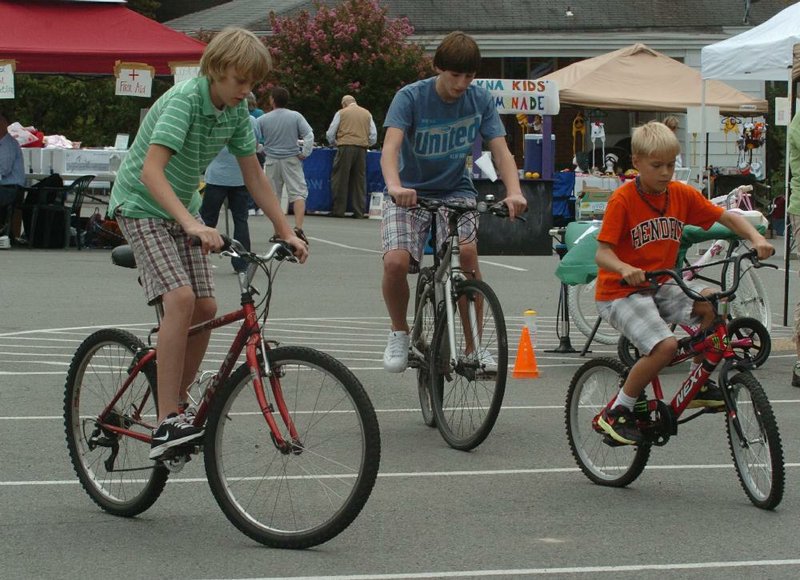LITTLE ROCK — How slow can you go on a bicycle?
That’s what Coreen Frasier and Willa Williams asked kids who showed up to play bicycle skill games at the Kingwood Neighborhood Association’s Big Block Party on Sept. 17.
Frasier and Williams, who are volunteers with Bicycle Advocacy of Central Arkansas, created an obstacle course for two-wheelers in a parking lot on Durwood Road in Little Rock, but the games they played are easy to set up just about anywhere there’s level bicycle-safe pavement. With some sidewalk chalk and halved tennis balls (or other markers), it’s easy to duplicate their games. Here’s how.
Snail race:
In the snail race, the winner crosses the finish line last. Riders weave and wobble down a wide race course about 30 feet long, with the start and finish marked in chalk on the pavement. Riders go as slowly as possible without putting their feet down or crashing into the other racers. The winner is the one who crosses the finish line last.
Without the stabilizing effect of the bike’s spinning wheels, balance becomes much more difficult. The results are challenging and comical.
Zigzag course:
A zigzag or slalom course can be set up with tennis balls cut in half standing in for the usual flags. Sidewalk chalk arrows indicate whether children should ride to the left or right of each inverted half-ball. Riders cruise through the course, alternately passing to the left or right of each marker.
To teach them to pass the markers as closely as possible, have children practice steering by leaning into the turn instead of just turning the handlebars. A marker like a halved tennis ball that’s low to the ground won’t trip them up if they miss and ride over it.
Rock dodge:
The rock dodge simulates a rock or other hazard in the road. To set up this game, place four halved tennis balls in a square with a fifth in the middle. The goal is to ride through the square and swerve around the center ball.
Make the square smaller to challenge more experienced riders.
SAFE HABITS
Several of the games focused on teaching children to ride safely and follow the rules of the road. On a pretend street, drawn with sidewalk chalk, participants practiced keeping to the right side of the road and navigating intersections. Frasier and Williams had children stop and look both ways at a chalk intersection before signaling a turn and riding through.
A set of parallel chalk lines represented railroad tracks in a game to teach riders to safely cross the real thing. Bike tires can easily slip into the narrow gap next to each track and become caught, bringing a rider crashing to a stop. To cross tracks safely, riders were taught to cross with the bike’s tires at a right angle to the track. If tracks cross the road at something other than a right angle, riders should move to one side of the lane and weave back to the other side at an angle that puts their tires perpendicular to the gap, or get off and walk the bike across.
Many wrecks between cars and children on bikes occur when kids are riding out of their driveways, so the volunteers set up a demonstration to show young riders how they’re hidden from passing traffic by nearby parked cars and should look before riding out from behind one.
Although several of the children that afternoon came without helmets and Frasier and Williams ran short of ones to lend out, Frasier said that kids should always wear helmets while on their bikes, even if they’re not riding on the road.
Some of the kids that afternoon were too young for the games, and they preferred to scoot around on strider bikes. These pedal-less bicycles are intended to teach very young children to balance and are an alternative to training wheels.
Williams said that even adults can benefit from sharpening their bike-handling skills by playing these or similar games. Taking her own advice, during quieter times, when the children had been drawn off by other attractions at the party, she rode laps through the course herself.
Family, Pages 31 on 10/12/2011
